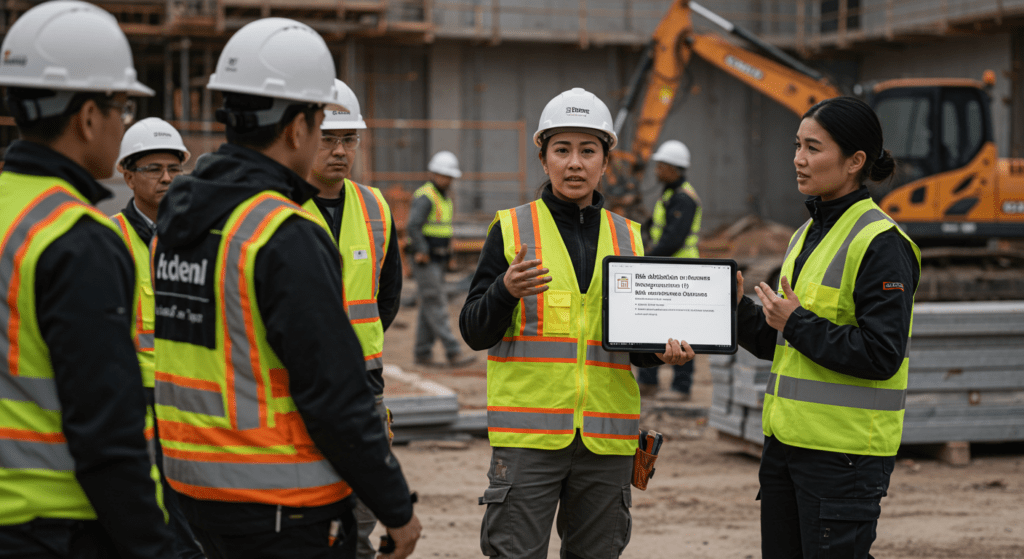- Understanding Insurance Basics in Construction
- Key Contract Clauses and Their Insurance Implications
- Risk Allocation in Construction Projects
- Coverage Gaps and Overlaps
- Analyzing Insurance Claims in Construction Disputes
- Contractual Liability and its Insurance Impact
- Mitigating Risks through Integrated Contract and Insurance Strategies
- Case-Studies: Successful Contract and Insurance Alignments
- Future Trends in Contracts and Insurance within the Construction Industry
Construction contracts are essential documents that establish the rules, responsibilities, and expectations for all parties involved in a project. They provide a framework that governs the relationship between contractors, subcontractors, clients, and suppliers. These agreements outline every aspect of the work, including timelines, payment schedules, performance quality, and dispute resolution procedures. In the construction industry, contracts are not only the basis for managing the execution of physical tasks but also serve as legal instruments to enforce accountability and predict liabilities if things proceed out of plan.

1. Understanding Insurance Basics in Construction
Insurance is a crucial element in the construction industry, where the risks of damage, injury, or financial loss are significant. Generally, construction insurance covers a range of risks including property damage, third-party liability, workers’ compensation, and business interruption. Stakeholders in construction projects rely heavily on insurance products to provide financial protection against unforeseen events. The strategic use of insurance in construction projects helps parties manage risks, transfer potential liabilities, and ensure continuity in the face of accidents or natural calamities.
2. Key Contract Clauses and Their Insurance Implications
Several key clauses in construction contracts have significant insurance implications. Firstly, indemnity clauses outline the responsibilities of each party when damage or loss occurs. These clauses typically require one party to compensate another for specific losses, often influencing the type and extent of insurance coverage required. Secondly, limitation of liability clauses specify the maximum amount that can be claimed in case of breach or failure, effectively capping the financial exposure of the involved parties. Thirdly, force majeure clauses provide for events beyond the control of any party, sometimes offering an avenue for insurance claims if uncontrollable events cause delays or damages. Understanding these clauses is fundamental for aligning contract terms with appropriate insurance coverage.

3. Risk Allocation in Construction Projects
Risk allocation is a central tenet of construction contracts and insurance policies. By delineating responsibilities for various risks, contract drafters ensure that every party understands where the burdens lie. In practice, risks are distributed between the owner and contractor through insurance policies that complement contractual obligations. Some contracts may lean towards transferring most of the risk to contractors by requiring them to obtain comprehensive insurance coverage, while others share risks more equitably among stakeholders. Successful alignment involves a careful balance to prevent any party from being overburdened by risk, and thereby impacting project outcomes and profitability.
4. Coverage Gaps and Overlaps
One of the challenges in integrating insurance with construction contracts is ensuring that there are no gaps or overlaps in coverage. A gap might occur when a contract excludes certain perils that are not covered by any insurance policy, leaving parties vulnerable. Conversely, overlaps may lead to redundant coverage, potentially causing confusion during claims processing and increasing costs unnecessarily. Effective contract management requires a detailed review of both contractual obligations and insurance policies. This audit ensures that each risk is addressed only once, and that each party is adequately protected without duplication of coverage.

5. Analyzing Insurance Claims in Construction Disputes
The process of filing and managing insurance claims is frequently a source of contention in construction disputes. Disputes often arise regarding the interpretation of policy terms, triggering the need to evaluate whether a claim falls under the insurer’s coverage. In many cases, delays or denials in claims can lead to litigation. Analyzing these claims involves examining the clauses in the construction contract, reviewing the insurance policy, and assessing the circumstances of the incident. A recurring theme in successful dispute resolution is the proactive alignment of contractual terms with insurance policies to minimize ambiguity. When claims are handled methodically, both insurers and contractors can avoid lengthy legal battles and associated costs.
6. Contractual Liability and its Insurance Impact
Contractual liability is an essential concept that links the legal responsibilities defined in construction contracts and the protection offered by insurance. The allocation of liability is often influenced by the wording of the contract, determining the extent of any breach of contract and the resulting damages. For example, clauses that introduce joint and several liability can significantly impact the scope of insurance coverage required by a contractor, exposing them to potential claims from multiple parties. A clear understanding of contractual liability helps in structuring insurance policies that not only protect against common risks but also provide a buffer against the legal obligations arising under the contract.

7. Mitigating Risks through Integrated Contract and Insurance Strategies
The integration of contract management and insurance procurement is a proactive strategy for mitigating risks inherent in construction projects. By analyzing the project’s specific needs, stakeholders can design contracts that complement insurance policies. This integration involves aligning the risk transfer mechanisms in the contract with adequate insurance coverage. For instance, a project that anticipates frequent site interruptions from natural disasters should ensure that both the contract and the insurance policy address potential delays and property damage. Furthermore, building contingencies into contracts can lead to measurable cost savings, as disputes are less likely to occur if responsibilities and risk management strategies are laid out clearly from the start.
8. Case Studies: Successful Contract and Insurance Alignments
Real-world examples provide valuable insights into how effective contract and insurance alignment can lead to successful construction projects. In one notable case, a large-scale commercial construction project was delayed by unexpected severe weather conditions. The contract included an extensive force majeure clause, and the contractor had secured a robust insurance policy. Because both the contract and the policy clearly outlined responsibilities and procedures for such events, the claim was processed efficiently, minimizing downtime and financial loss. In another instance, a residential development project faced unexpected foundation failures. A well-drafted indemnity clause in the contract, complemented by an equally comprehensive insurance policy, ensured that the financial responsibilities were quickly allocated and the project resumed with minimal delay. These case studies highlight that careful planning and the early integration of contracts with relevant insurance policies are essential in the modern construction landscape.

9. Future Trends in Contracts and Insurance within the Construction Industry
As construction projects become more complex and technological advancements reshape the industry, both contracts and insurance policies are evolving to address emerging risks. Digital technologies are enhancing contract management processes, with the increasing use of smart contracts and blockchain to automate the enforcement of contractual obligations. Concurrently, insurers are using data analytics to better understand risk patterns and provide more tailored policies. The trend toward sustainable construction is also influencing contractual and insurance practices, as green building standards require new forms of risk allocation related to environmental liabilities and performance guarantees. As these trends continue, it is expected that the gap between contract law and insurance underwriting will narrow, leading to more adaptable and integrated risk management strategies in the construction industry.

Conclusion
The relationship between construction contracts and insurance is a critical interplay that underpins the safety, efficiency, and economic viability of construction projects. Understanding the foundational aspects of both tools, from key contractual clauses to the nuances of insurance coverage, is pivotal in managing risks effectively. By aligning contract obligations with carefully selected insurance policies, stakeholders can ensure that their projects are protected against a wide range of unforeseen events. The evolution of digital tools and the rising importance of sustainability signal a future where contracts and insurance products will become even more intertwined, leading to more comprehensive risk mitigation solutions. In an industry where every detail counts, the conscientious integration of contractual and insurance strategies is essential for long-term success.
